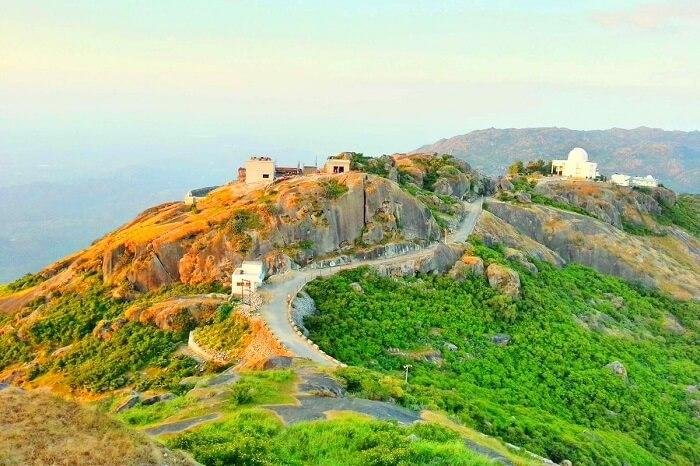MOUNT-ABU-ONE-WAY-TAXI SERVICE

Udaipur to Mount Abu and Mount Abu to Udaipur One Way Taxi Are Available Here. Sedan Taxi at Rs 2200/- and SUV Taxi at Rs 3200/- The Distance Between Udaipur to Mount Abu 160Km. Extra Charges Will Be Charged On Extra Km. Rs 10/- On Sedan Car and Rs 12/- On SUV Car.
SOME MORE ABOUT MOUNT-ABU
Mount Abu is a hill station in the Aravalli Range in Pindwara – Abu meeting Constituency Of Sirohi district of Rajasthan state in western India, near the border with Gujarat. The mountain forms a stony plateau 22 km long by 9 km wide. The highest peak on the mountain is Guru Shikhar at 1,722 meter (5,650 ft) above sea level. It is referred to as its heights are home to rivers, lakes, waterfalls and evergreen forests. The nearest railway station in Mount-abu is Abu Road railway station: 28 km away.
The old name of Mount Abu is Arbudaanchal. It is believed that sage Vashistha formed to the southern spur at Mount Abu following his differences with sage Vishvamitra. There is some other history constantly to which a serpent named “Arbuda” saved the life of Nandi (Lord Shiva’s bull). The incident occured on the mountain that is currently known as Mount Abu and so the mountain is named “Arbudaranya” after that occurency which gradually became Abu. The defeat of Mount Abu in 1311 CE by Rao Lumba of Deora-Chauhan dynasty brought to an end the reign of the Parmars and marked the reduce of Mount Abu. He moved his capital city to Chandravati in the plains. After the destruction of Chandravati in 1405, Rao Shasmal made Sirohi his head office. Later it was leased by the British government from the Maharaja of Sirohi for use as the head offices.
The Arbuda Mountains region is said to be first abode of the famous Gurjars. The alliance of the Gurjars with the mountain is noticed in many inscriptions and epigraphs including Tilakamanjari of Dhanpala. These Gurjars migrated from the Arbuda (Mount-Abu) mountain region. As earlier as sixth century CE, they set up one or more emirate in Rajasthan and Gujarat. Almost all over largerst part of Rajasthan and Gujarat had been known as Gurjaratra or Gurjarabhumi for centuries before the Mughal period. According to a legend, sage Vashistha performed a great yajna at the peak of Mount Abu, to seek from the gods a provision for the protection of righteousness on earth. In answer to his devotation, a youth arose from the Agnikunda — the first Agnivansha Rajput. Achalgarh Fort is one of more attracting site which was built by Parmar Rajput kings.
The mountain is also the home to a number of Jain temples including Dilwara Temples, multiple temples cut out of white marble. The Dilwara Temples or Delvada Temples are detacted about 2½ km from the Mount Abu agreement, Rajasthan’s only hill station. These Jain temples were built by Vimal Shah and the structure is made by Vastupala, Jain ministers of Dholka, between the 11th and 16th centuries and are famous for their use of white marble and intricate marble cuttings. They are a pilgrimage place of the Jains, and a beloved tourist attraction. The temples have an opulent entranceway, the simplicity in architecture is showing the Jain values like honesty and frugality. The ornamental details are spreading over the minutely carved ceilings, doorways, pillars, and panels is easily marvelous. The temple complex is in the mideast of a range of forest hills. There are five temples in all, each with its own different identities. All five temples are surrounded within a single high walled compound.